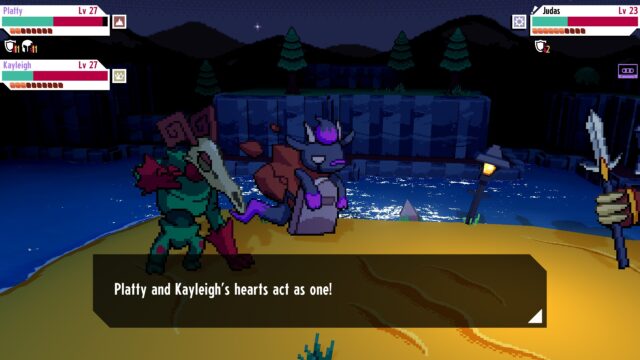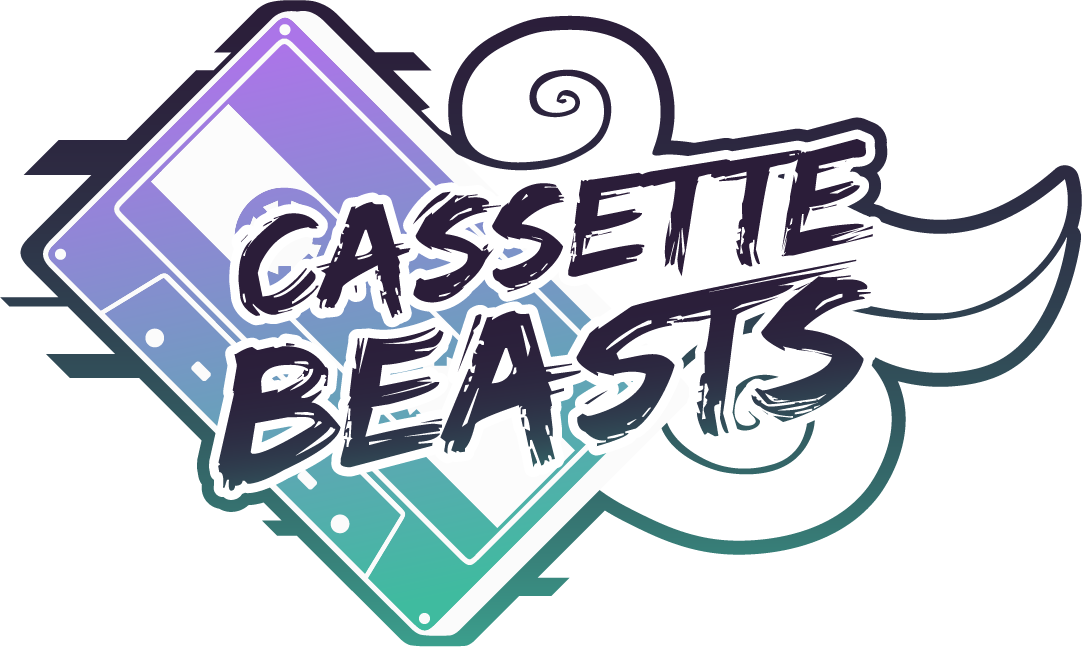Cassette Beasts Review
So Retro
Pokémon and Dragon Quest Monsters titles have had special places in my gameplay loop for the past two decades. While the former has always primarily focused on one-on-one battles with the latter often dealing with four-monster active parties, I’ve enjoyed both immensely. Slipping somewhere into the space between these battle styles, Cassette Beasts joins the monster-collecting genre with its take on 80s culture and 90s gameplay. It blends the two quite well to make a game that doesn’t do much new, but provides a decently distinct gameplay experience nevertheless.
Cassette Beasts begins with the customized player character washing ashore on the island of New Wirral. This island is quickly revealed to be in another dimension, upon which souls from multiple different Earths have somehow ended up trapped. This setup pays off throughout the game with some hilarious NPC interactions, because while almost everyone is human and from Earth, things have transpired differently on their worlds. Hearing stories about the United Nations brokering the Human-Elf peace deal in 1948, or about the Shark-Man War of 2023 is fun flavor text that helps offset the serious nature of these characters being trapped away from their loved ones on an island crawling with beasts. Fortunately, in the years before the player’s arrival, residents learned of the magical power of cassette tapes. Armed with a walkman and tapes, residents can record the island’s beasts and transform into them at will. Using this power, players join forces with multiple partners throughout the game to explore an open-world island, take on zombie realtors, challenge mighty Ranger Captains and archangels, and more, all while trying to make their way home.
The game does a good job of portraying the helplessness of the NPCs trapped and making a life for themselves on this island. One way a bit of the deeper lore comes out is from one of the many characters players can take into battle and bond with. Each possible partner throughout the game has a relationship level that advances as they fight alongside the player, as well as through spending time together at campfires or the local cafe. These relationships not only add some background information about the characters and world, but increase their power when fused in battles.
The battle system of Cassette Beasts is primarily a two-against-two affair, where the player and their partner each transform to take on two beasts at a time. Battles start after players run into visible beasts on the overworld and are turn-based, with beasts each attacking once per round in order of their speed. Player characters have their own HP pool separate from the beasts they transform into during battle. If their beast’s HP drops below zero, the players revert to their human form and can take direct damage before being able to change into a new beast. The overall battle system is nothing new to turn-based monster-collecting RPG fans, but some interesting tweaks make it simultaneously fun but frustrating.
On the positive side, there is no need to raise levels of newly caught beasts to match a veteran party. Player characters level up from experience from battles, and when summoned, beasts are at the level of the player. As beasts gain more stars through battle experience, beasts’ own version of leveling up, they learn skills, which are attached to their beast tape and then can be peeled off and put onto other beasts. It’s fun to be able to mix-and-match attacks and skills between beasts and customize them to one’s heart’s content. Once beasts gain five-star status, they can evolve into stronger versions, and some even have divergent evolutions based on questions the game asks of players. Instead of an MP pool, beasts use action points (AP), which are gained each round, to attack. Better attacks use more AP, and the balance between saving up for larger attacks or immediately using smaller skills is well-developed.

Fusing monsters in battles greatly increases their stats and offers players a new beast capable of using both parent beasts’ skill pools.
The frustration with the battle system stems from a likely attempt to make different beast types interact more realistically. Each beast in the game has a type, but the game strays significantly from the simple extra or reduced damage effect. For example, using a fire-type move against a plastic type, doesn’t necessarily cause more damage, rather the plastic-type beast melts and becomes a poison type, often inflicting poison contact damage upon the attacker. Similarly, those same fire attacks will melt ground beasts into glass types or boil water beasts into air types. The dizzying amount of interactions that can take place between more than a dozen types is hard to get a grasp on. Something else difficult to deal with is how slow battle animations are and the lack of options to speed them up or turn them off. Between beasts with huge HP pools and the dozens of battle animations needed to be seen before defeating them, late-game battles drag on far longer than they should. Even battles against foes twenty-or-more levels below the player take multiple rounds to slog through.
The fusion system in Cassette Beasts is something developer Bytten Studio hyped before the game’s release, and for good reason. For most of the game, players have the option to fuse their beast with that of their partner. The beasts’ battle sprites fuse into a single sprite, and players have access to both beasts’ abilities as well as gaining increased stats. With 120 beasts in the game, this impressively leads to 14,400 potential fusions, and the blended sprites for most of these look great. Early on, powering the game’s fusion meter is quite difficult, but as the game progresses, options to speed this up and use it more frequently become available. It’s a powerful, and frequently life-saving, option in many boss battles and late-game dungeons.
Similar to the mixed-bag of the battle system, the overworld exploration has its ups and downs. While the game is an open-world experience, there are areas gated by the need to learn traversal skills. It takes catching specific beasts to learn the skills such as swimming, floating, or rock climbing needed to access all areas. These aren’t too tricky to do, as town residents will tell you rumors about where to go and what to recruit next, but what is downright frustrating are the overworld puzzles. With such a large overworld, the environmental puzzles on it are often times as difficult to identify as something that needs to be solved as they are to actually solve. Many hours can be spent looking for the next place to go when it really was an obscure landscape-inspired puzzle walked past long before.
Visually, the game evokes memories of late-DS Pokémon titles, with bright 3D backgrounds filled with pixelated players and beasts. In general, these two styles blend together well, but fall apart a bit when it comes to battles against archangels. These battles are main story progression points, and often look bizarre. Each archangel is a different visual style, with one looking like a crayon-drawn horse, while others are just collections of polygons. It’s a stylistic choice that puts too many differing looks on the screen at a time and lacks any visual coherence.
Something that isn’t jarring in any way is the soundtrack for Cassette Beasts. Composer Joel Baylis does a superb job from top to bottom with booming battle themes, peaceful overworld ambient tracks, and a memorable town tune. While all the compositions are excellent in their own right, often the vocals of Shelby Harvey in certain songs elevates those tracks immensely. Players can toggle vocals on or off depending on preference, but keeping them on definitely was a highlight of the game. Of special note is the main town track, Wherever We Are Now, which beautifully conveys the journey of the player and New Wirral’s residents. Voice acting is infrequently used, and typically only for a few words rather than whole sentences, but is always performed well.
Cassette Beats is generally a good game that takes the classic Pokémon formula and tries to iterate upon it in almost all areas. For the most part, the ideas are indeed a step up from the first few Pokémon generations, but the execution doesn’t quite come off in the pace of battles and its more obscure puzzles. The double-battle nature of the game and the beast customization offers players a great deal of strategy to engage with while listening to an excellent soundtrack. With such a broad open-world setting, RPGamers will likely find themselves immersed far beyond the fifteen hours of mainline content the game has to offer.
Disclosure: This review is based on a free copy of the game provided by the publisher.


Sounds great
Battle system allows for a good amount of strategy
Fusion system in battle is fun to watch monsters combine
Fun setting with hilarious alternate-Earth history
Obscure puzzles that are as difficult to spot as to solve
Sometimes too many different graphics styles on the screen at one time









Recent Comments